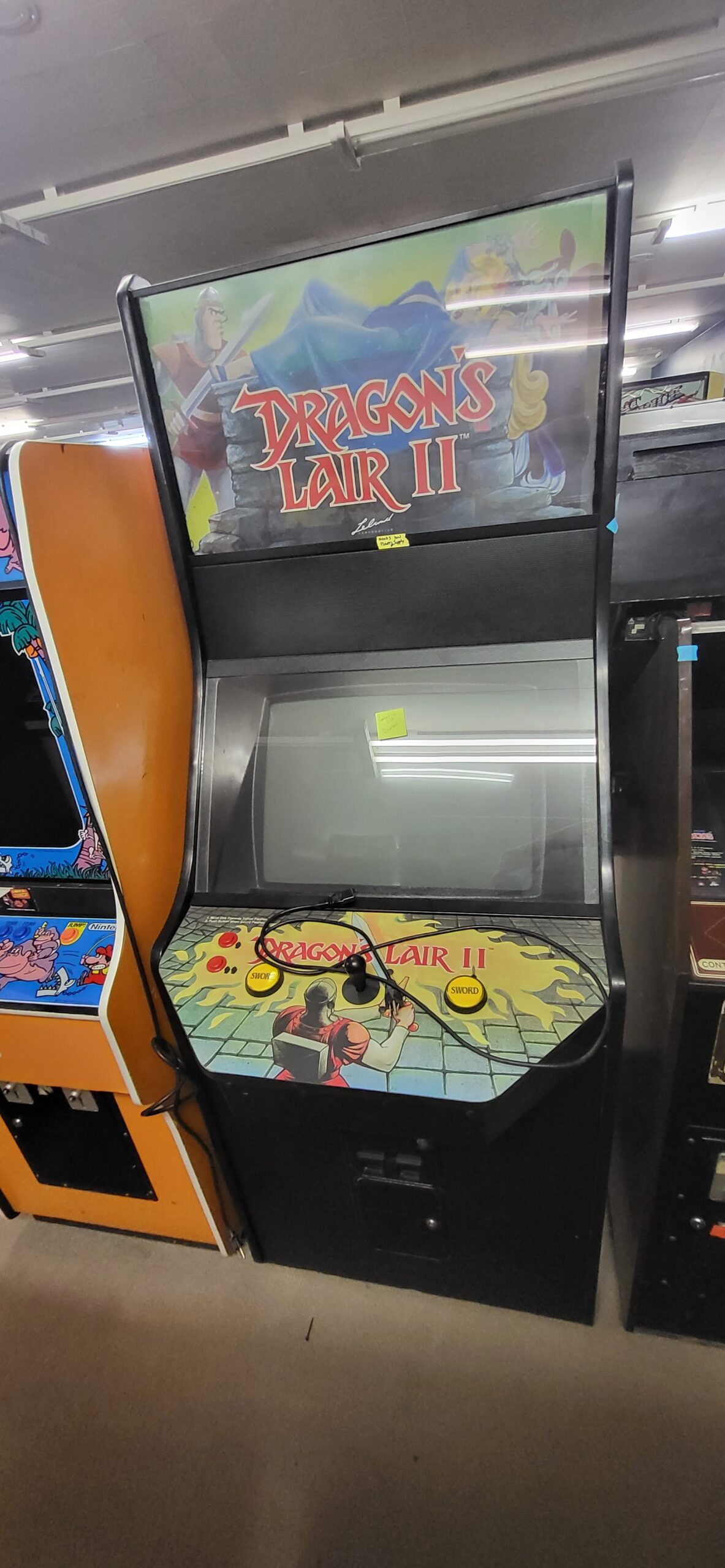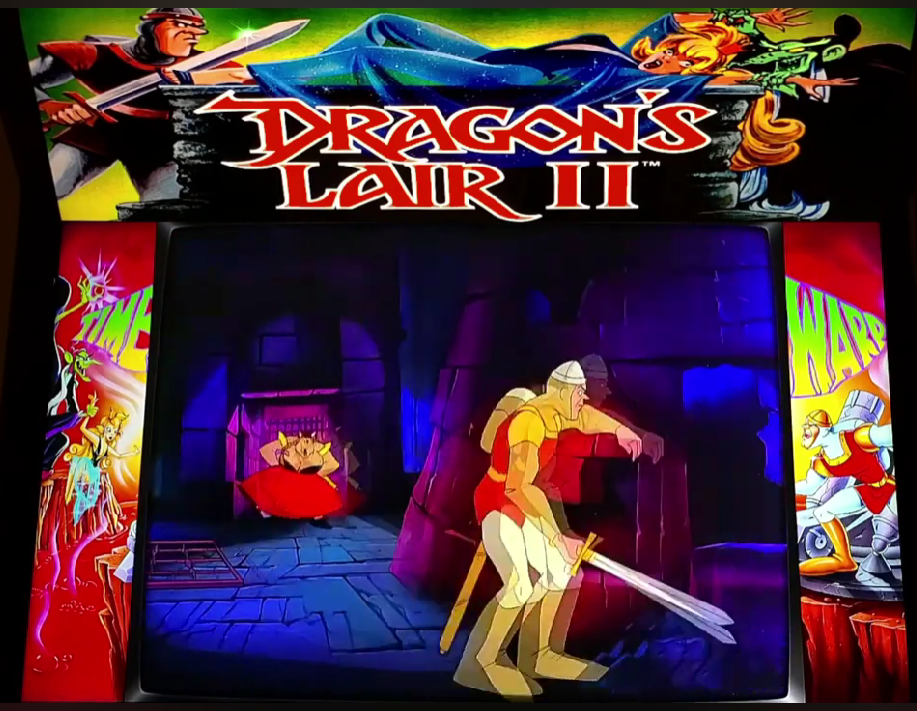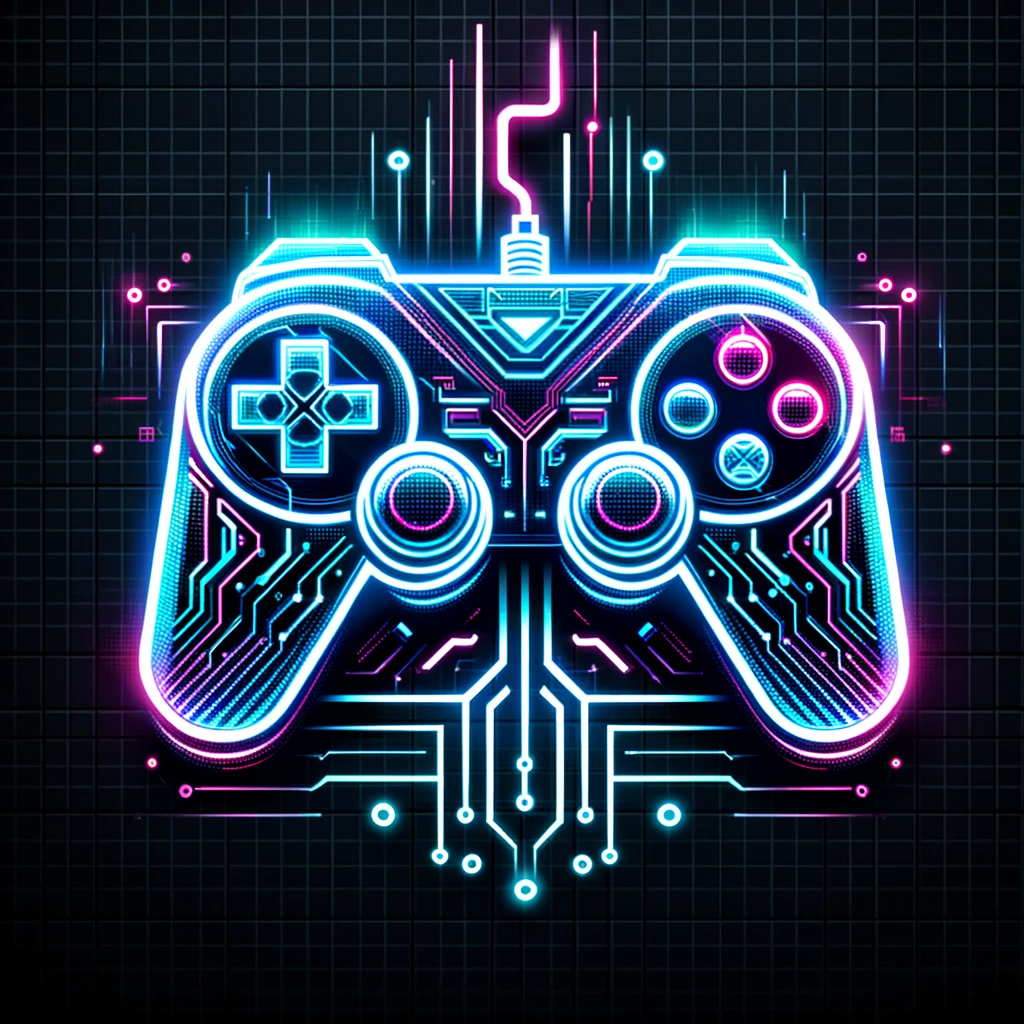
Dragon's Lair II: Time Warp
Arcade/Video Game/ Leland Corporation 1991
Dragon’s Lair II: Time Warp is an iconic arcade video game developed by Leland Corporation and released in 1991. Serving as a sequel to the original Dragon’s Lair, this interactive movie game incorporates stunning hand-drawn animation by legendary artist Don Bluth. The game follows the adventures of the valiant knight Dirk the Daring as he embarks on a quest through time to rescue Princess Daphne from the evil wizard Mordroc.
Dragon’s Lair II: Time Warp emerged during the golden era of arcade gaming. Leland Corporation, in collaboration with animator Don Bluth, continued the innovative concept introduced in the first Dragon’s Lair game. The development process involved meticulous animation work, creating a visually captivating and immersive experience. The game showcased the state-of-the-art LaserDisc technology, providing players with a cinematic feel and unique gameplay mechanics.
Upon its release, Dragon’s Lair II received praise for its groundbreaking animation and engaging storyline. The game was lauded for pushing the boundaries of what was possible in arcade gaming at the time. Despite some criticism for its reliance on quick-time events, it garnered a dedicated fanbase and remains a significant part of gaming history.
Dragon’s Lair II was initially released as an arcade game, but it later found its way onto various platforms, including home consoles and PC. The success of the Dragon’s Lair franchise also led to the creation of several spin-offs and adaptations for different gaming systems and media.
Due to its popularity and initial success, Dragon’s Lair II remains a sought-after collector’s item. The game’s rarity, coupled with its historical significance, contributes to its value in the retro gaming market. Depending on factors such as condition, originality, and packaging, the estimated value of a Dragon’s Lair II arcade machine can vary.
Dragon’s Lair II ran on the LaserDisc-based hardware developed by Leland Corporation. The hardware specifications included a dedicated LaserDisc player and custom circuitry for interactive gameplay. For potential repairs, enthusiasts may need to source specific components such as the LaserDisc player, power supply, and control interface. Additionally, routine maintenance of the original CRT monitor may be required to preserve the authentic gaming experience.


